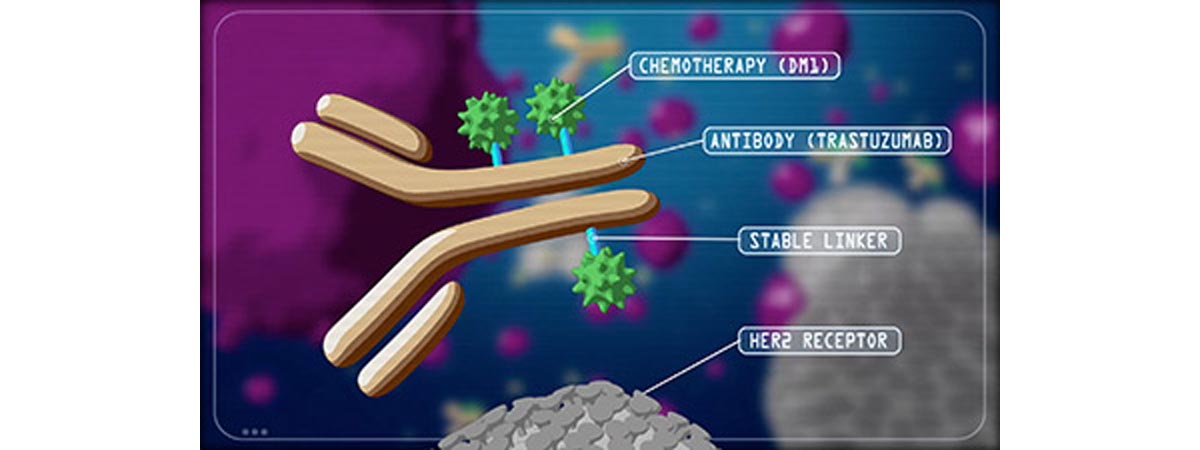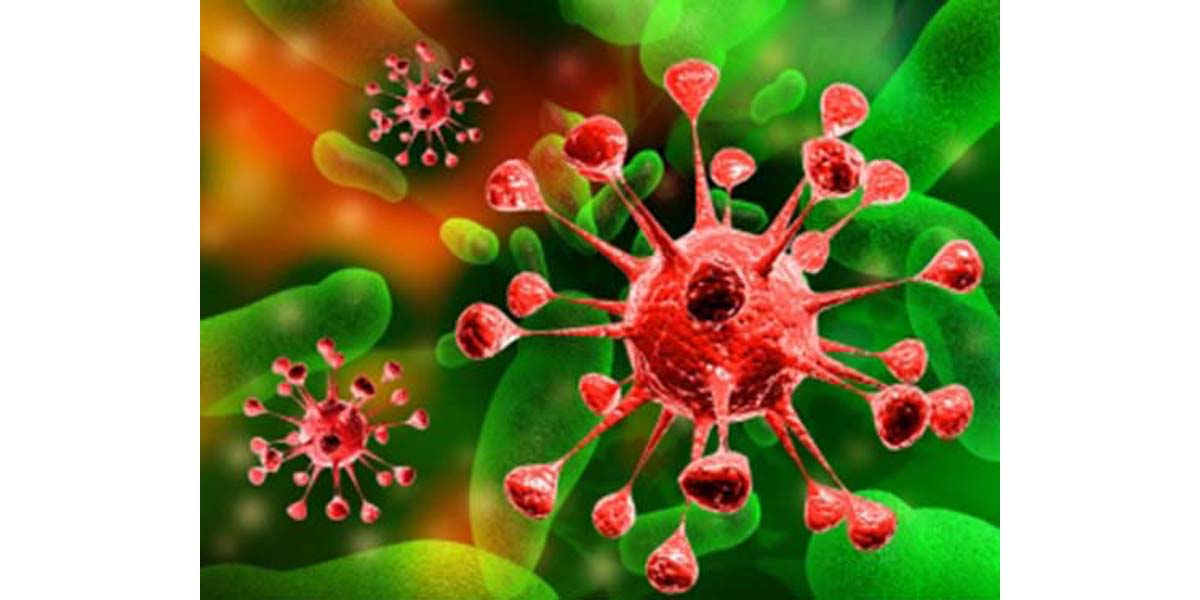The U.S. Food and Drug Administration has recently approved a new drug for breast cancer which targets only the tumor cells and spares healthy tissue. Kadcyla, which is a form of trastuzumab emtasine, attached to another drug called DM1, "interferes with the growth of cancer cells", according to Richard Pazdur, MD, Director of Hematology and Oncology Products at the FDA. When it is delivered to the target site, it slows the progression of the disease and shrinks the tumor itself by stopping the cells from being able to grow and divide.
The combination of the drugs along with a third, add up to a potent cocktail which, when delivered to the target site, binds to the tumor cells and they are fooled into ingesting it, that’s when it zaps them. The ‘explosion from within’ of the cancerous cells means that this new drug is very efficacious exactly where it is needed and does not affect surrounding healthy tissue.

More medication is delivered exactly where it is needed, without traveling all the way around the bloodstream. This can also mean that the usual side effects which are known to occur with chemotherapy may be greatly reduced. Patients can expect a great decrease in vomiting and smaller amounts of hair loss and other effects than usual.
Breast Cancer
Breast cancer is the second worst form of cancer in the US after pancreatic cancer. It is thought that in the United States, 1 out of every 8 women is at risk of developing some form of invasive breast cancer. This means that there are potentially over a quarter of a million new cases every year.
Cancer is caused when mutations in genes cause cells to act strangely. Mutations occur all the time and sometimes they can have no effect at all. Or, a mutation could lead to a form of cancer which is benign, which means that it is perfectly harmless. But sometimes, whether helped by environmental influences or not, it is not really fully known, a mutation can lead to a malignant cancer. This is the harmful type.
This cancer causes cells to grow with no cease. They proliferate and divide into the tissue where they start and can also spread out into surrounding tissues, or even travel along blood vessels and turn up in distant tissues.
Treatment Options
The treatment options for breast cancer can be quite overwhelming. Surgical removal can be followed by chemotherapy, radiation or hormonal therapies. According to breastcancer.org, there are over 80 known side effects of cancer treatment and a lot of these can be attributed to treatment by chemotherapy. They include pain, hair loss, nose bleeds, heart problems, numbness, muscle pain and nausea.
Many of these side effects occur because chemotherapy is a systemic medicine. Some strong drugs are used, often more than one at a time to target the tumour. These are administered either in tablet form or as an intravenous drip. Both of these methods result in these medications circulating throughout the whole body.
Revolutionary Treatment With Kadcyla
Kadcyla really is a revolutionary way of treating breast cancer. It has been approved for use by the FDA in about 20% of breast cancer cases. These are cases which are typically a more aggressive form and less responsive to hormonal therapy.

It is most efficacious in patients whose cancerous cells overexpress HER-2 which is Human Epidermal growth factor Receptor 2. This means that the cells of these patients have more of this receptor on their cell membrane than normal. Herceptin can circulate in the blood and find these receptors and whatever cancer medicine is attached to the Herceptin molecule can then target the cell and destroy it. There are two types of these medicines:
- Anthracyclines are like antibiotics. They damage the DNA which is found inside cancer cells. This makes the cells die. Typical anthracyclines include: Adriamycin, Ellence, and Daunorubicin.
- Whereas Taxanes interfere with the way that cancer cells proliferate and divide. Types of taxanes include: Taxol, Taxotere, and Abraxane.
The trouble is that these two molecules, Herceptin and the cancer medicine can come apart in places other than directly at the site of the cancer. This can cause other innocent cells to be affected in the way that we want the cancer cells to be. This causes the side effects and the randomness of when it happens means that every cancer patient who is undergoing therapy is affected in different ways.
Kadcyla
The key to the way that Kadcyla works is the third molecule which has been introduced into the mix. The third molecule binds strongly to the two others. It only lets them break apart once they are inside the cell – and the Herceptin ensures that they target mainly cancerous cells at the site of the tumour. Once they are inside, then, boom!
Late Stage Cancer
At the moment, this has been approved for use in patients with late stage cancer who have already been treated with Herceptin and Taxane. It prolongs the life of late stage sufferers by around 10 months and costs around twice that of other treatments.
But GPs do not have to restrict themselves only to the FDA guidelines. Researchers are now exploring the possibility that this and similar advances in drug-delivery technology may soon become available to early stage breast cancer patients and also to patients who have other types of cancers. Much more research is needed in order to make this a reality.
If therapies like these can be developed for these and other types of cancers then the 'Big C' would certainly start to lose some of its bite.


Your thoughts on this